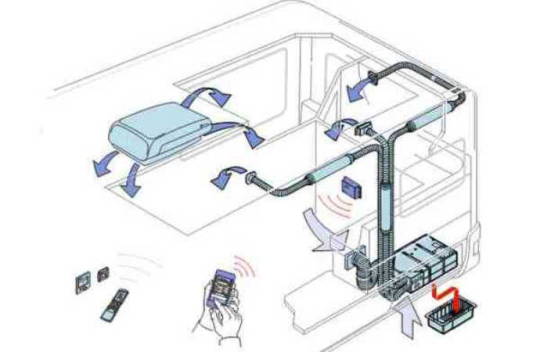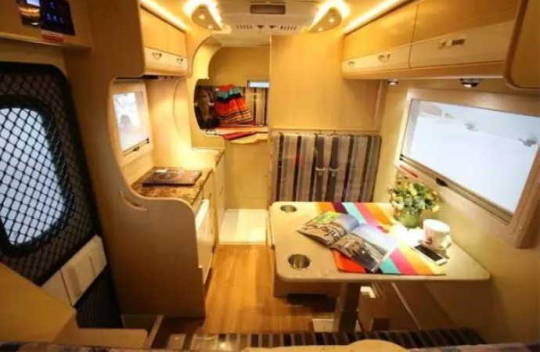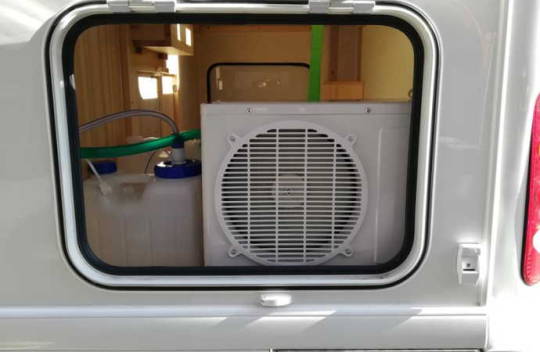#tkt ev solution
Explore tagged Tumblr posts
Text
0 notes
Text
0 notes
Text
0 notes
Text
Maintenance and Cleaning of RV Air Conditioning System
RV air conditioners, like home air conditioners, need to be maintained, such as regular cleaning to see if the air conditioning filters are aging, etc. TKT reminds you to pay attention to regular maintenance of your RV air conditioner to give yourself a comfortable and refreshing environment.
To perform maintenance on the resident air conditioner, you must make sure that the air conditioner is not connected to the power supply, otherwise, it will jeopardize personal safety. Remove accumulated dirt and debris such as leaves after first removing the valve cover of the roof air conditioning unit. Rinse the air conditioning filter in warm water as much as possible and place it in a cool place to dry before installing it.

Vehicle Air Conditioner
1.1 Check and clean the rv air-conditioning filter or screen, and replace the air-conditioning filter in time if necessary. The replacement cycle of the air-conditioning filter is once a year; if the vehicle is used in a harsh environment, shorten the air-conditioning filter replacement cycle according to the actual situation. 1.2 Check the RV air conditioning compressor for oil leakage and seepage, and check the air conditioning compressor belt for abnormal wear and tear, if any of the above conditions, please contact the service personnel for repair in time. 1.3. Start the vehicle and turn on the onboard air conditioner to test the cooling condition of the air conditioner, if the air conditioner does not cool well or if fault codes appear, please contact the service personnel in time. 1.4 Check whether the air conditioning medium tube is loose or interfering with wear and tear, if the above situation occurs, please contact the service personnel in time to deal with it. 1.5 Do not step on the gas pedal when the air conditioner is first started, and run the vehicle at idle speed for 3 minutes or run the vehicle smoothly after turning on the air conditioner.

Top-Mounted Air Conditioner
2.1 Remove the air-conditioning filter, check if it is broken, clean the filter with an air rope or by flushing it with water, and install the filter again after it is completely dry. 2.2 Start the vehicle, turn on the charger/inverter or connect the external power supply, check whether the air-conditioning air switch in the distribution box is working properly, and if there is any abnormality, contact the service personnel to deal with it in time. 2.3. Climb on the roof of the vehicle and check whether the drain port of the air conditioner is clogged, if the drain port is clogged, clean the drain port in time. 2.4 Start the power to turn on the air conditioner, and test the cooling condition of the air conditioner, if the air conditioner does not cool well or fault codes appear, please contact the service personnel to deal with it in time.
Wall-Mounted Air Conditioners
3.1. Remove the filter of the inner unit of the air-conditioner, clean the air-conditioner filter by using an air rope or by rinsing with water, and install the air-conditioner filter after the filter is completely dry. Use an air rope to clean the filter of the outside air conditioner. 3.2 Check whether the fixing of the internal and external units is loose. Check whether the air conditioner medium pipe is loose or interfering with wear and tear, if the above situation occurs, please contact the service personnel to deal with it in time. 3.. Start the power to turn on the air conditioner and test the cooling condition of the air conditioner, if the air conditioner does not cool well or the fault code appears, please contact the service personnel to deal with it in time.
Split-Type Air Conditioner Cleaning Method
Please clean the dust on the filter at the air intake of the air conditioner on time to improve the cooling effect and at the same time facilitate energy saving.
The RV air conditioning filter should be cleaned frequently to avoid accumulation of dust. When cleaning, please use a soft towel or sponge, dip it in water or non-corrosive neutral detergent to clean, and finally wipe it with water and a dry rag.
Do not use a soft towel or other sponge with dripping water when cleaning, to avoid water droplets penetrating the indoor electromechanical control and causing damage to the substrate, or even starting a fire.
Do not use hard brushes, steel balls, wire brushes, abrasives (e.g., toothpaste), organic solvents (e.g., alcohol, acetone, banana water, etc.), boiling water, or acid or alkaline items when cleaning, as this will damage the air conditioner of the RV.
Regularly clean the outside air conditioner, rinse the outside fan, the chassis of the outside air conditioner, and the visible parts in the left and right side fence holes of the outside air conditioner.
0 notes
Text
Difference Between RV Air Conditioner and Home Air Conditioner
With the rapid development of the global RV industry, users' demand for RV air conditioners is also growing year by year. RVers may have a question, why don't RVs just install home air conditioners? What are the advantages of RV air conditioning system? In this issue, we explore this question from a technical point of view.

The structure of RV Air Conditioners
To save valuable space inside the RV, RV air conditioners unit are usually designed to be installed on the roof. That is, it can save space and facilitate heat dissipation, and the heat dispersed does not affect the neighbors in the campground. The outside unit of the RV air conditioner is streamlined to reduce wind resistance when the vehicle is in motion.
Transportation Of Cold Air
For the structure of the caravan, the cold air is most efficiently transported from the top downwards, because the cold air itself is heavier than air. To avoid the cold air blowing directly in a small area, the caravan air conditioner is equipped with an Air Distribution Box abbreviated as an ADB panel. We can understand it as the inner unit of the caravan air conditioner. From the appearance, the ADB is a decorative panel with an operating system, the ADB panel distributes the cool air from the air conditioner to the front and rear areas of the caravan, so that the whole caravan enjoys even cool air.
For larger air con unit for caravans, the air conditioner can also be piped to deliver cool air through ducts to distribute the cool air to different functional areas according to demand, such as the driver's cab, living room, bedroom, and so on.
RV air conditioners have the same functions as home air conditioners: cooling, heating, and dehumidification. The height of the air conditioner affects the total height of the caravan, which in turn affects the passability of the caravan.

Effects of Vibration on Air Conditioning
An 12V RV air conditioning system installed in an RV is bound to follow the RV everywhere it travels. When the vehicle is traveling, there are starts, stops, and constant starting and stopping, which naturally causes bumps and vibrations in the air conditioner. The connecting pipes of the refrigeration system harden with the vibrations and can cause cracks or even breaks. Compressor swing with the car is the main "push" caused by the pipe rupture or fracture of the hand. Residential air conditioners use copper tubing to connect the inside and outside units, which is prone to breakage. 12 volt RV air conditioners have a better anti-vibration design than home air conditioners. In addition to considering vibration damping, the intake and exhaust pipes of caravan aircon units also take into account the damage caused by the vibration of the compressor.
Waterproof Design
Air conditioners produce water when cooling. The water that condenses on the evaporator collects on the chassis, but because the RV is moving and bumpy, the water can splash out. The caravan is on the roof, connected to the ADB panel inside the caravan through a 400mm*400mm or 360mm*360mm window, which must prevent condensation, and rainwater from seeping into the caravan. General caravan air conditioning will use an EVA (ethylene vinyl acetate copolymer) box pasted on the roof, and then cover the opening around, and then through the special long nut will be box waterproof EVA compression, which plays a very good waterproof role. EVA is not only waterproof but at the same time reduces the main engine vibration of the car's sound impact.
Safety issues
Incorrectly weighted motorhomes are prone to traffic accidents. The "death swing" is the phenomenon of swaying from side to side when the caravan is driven at high speed due to incorrect counterweighting.
Advantages of Inverter RV Air Conditioning
TKT top-mounted rv air conditioner is the company's high-end product. While continuing the inverter technology, it adopts the industry-leading dual-rotor compressor, which makes the air conditioner more balanced in its work and reduces vibration and noise. In addition, the air duct structure and ADB outlet panel of the air conditioner have been improved, resulting in a more balanced and smooth airflow and further reducing noise. Simply put, inverter RV air conditioners make less noise and are more energy efficient.
Millions of customers around the world have purchased and used TKT's EV air conditioning products. These customers are RV users, yacht owners, truckers, campers, and outdoorsmen. The reason for this rising trend is that people crave freedom and adventure, want to explore the world, and at the same time want to be away from their old lives for a long time. We call this the mobile life. Our mission is to make mobile living easy for our users.
0 notes